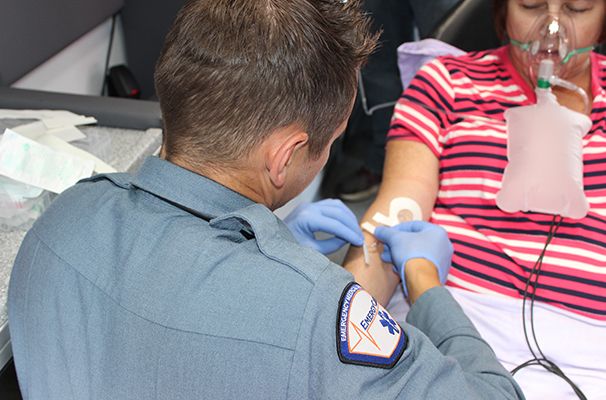What To Do Before Help Arrives
When the EmergyCare ambulance crew arrives, it is helpful to have the following things available for them:
- A list of the patient’s medications
- A list of the patient’s allergies
- A list of the patient’s medical history (What conditions do they see a doctor for? Diabetes, High blood pressure, have they ever had a heart attack or stroke, etc.)

If a patient is complaining of:
Abdominal pain: Place the patient in the position in which they are most comfortable. Do not give the patient anything to eat or drink.
Minor burns: Flush the area with cold water. Do not use butter or ointments. Keep the area clean.
Chest pain: Place the patient in the position in which they are most comfortable. If the patient is an adult and has never been allergic to aspirin, have them take it. Try to keep the patient calm.
Choking: If the patient cannot cough, breathe, or speak, begin the Heimlich maneuver if you are trained. If the patient can cough, breathe, or speak, do not strike them on the back.
Convulsions/Seizures: Clear the area to keep the patient from injuring themselves. Do not place anything in the patient's mouth. Do not attempt to hold them still.
Bleeding: Apply direct pressure to the bleeding site. Keep the area as clean as possible.
Drowning: If the patient is not breathing, begin the steps of CPR if you are trained to do so or if an emergency medical dispatcher is guiding you.
Electric Shock: Disconnect the electrical source if it is safe. If the patient is not breathing, begin the steps of CPR if you are trained to do so or if an emergency medical dispatcher is guiding you.
Fainting: Lie the patient flat on their back with feet elevated if this position is comfortable for the patient.
Suspected broken bones or dislocated joints: Keep the injured area from moving. Ice can be applied, however, not directly on the patient's skin.
Exposure to cold (possible frostbite): Slowly warm the patient by immersing them in tepid (not hot) water. Give warm, decaffeinated drinks.
Fall: Keep the patient as still as possible. Instruct the patient not to move their head or neck.
Vehicle collision: Keep any injured patient as still as possible. Do not move patients from the vehicle unless they are in danger.
Nosebleed: Keep the person's head tilted forward. Consider applying a cold compress to the nose or the back of the patient's neck.
Overdose: Call 911 immediately. Stay with the person. If naloxone (sometimes called Narcan) is available and you have been trained to use it, do so. If you don't know how to use it, let the 911 operator know it is available and ask for instructions on how to use it.
* These instructions are intended to be general guidelines only. Always follow your doctor's orders first. You may also receive instructions from the dispatcher when you call for an ambulance.
